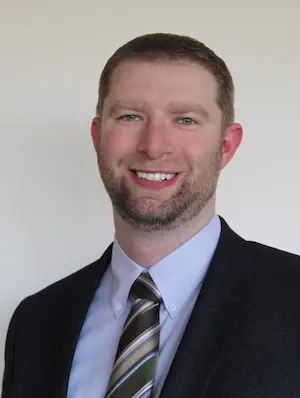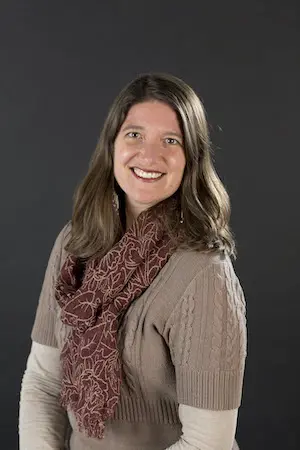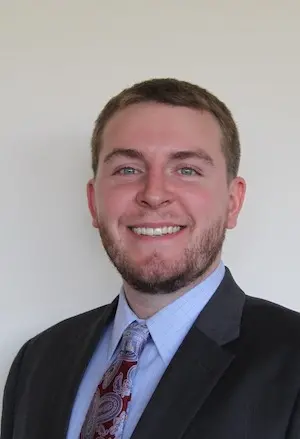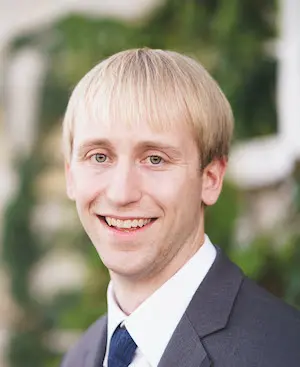A team of University of Wisconsin-Madison engineering alumni won the Institute of Transportation Engineers Vision Zero Sandbox Competition for innovative solutions that make intersections safer.
 John Campbell
John Campbell
The competition drew professional and student teams from across the United States and tasked them with analyzing traffic data from six intersections in Bellevue, Washington, a suburb of Seattle. The teams focused on using near-miss crash data to create solutions that reduce the likelihood of collisions at the intersections.
ITE separated students and professionals into their own categories and announced the winners in July 2021. Two University of Wisconsin-Madison teams made it to the finals: the Proactive Badgers, a team of alums who work across Wisconsin, and a student team. The Proactive Badgers took first place, while the student team finished second in its competition. ITE will include the Proactive Badgers’ work in an upcoming edition of its publication, the ITE Journal.
John Campbell, a member of the Proactive Badgers who earned his master’s degree in civil engineering in 2005, said the teams analyzed post-encroachment time—a measure of how close vehicles come to a collision if they maintain their trajectory while moving through an intersection.
“If there would have been a collision after four seconds, that’s not a very close near-miss,” Campbell says. “If there was just two-seconds till collision, that’s a close near-miss.”
The Proactive Badgers used the near-miss data as a surrogate for actual collisions and devised a methodology modular enough to suit the needs of different cities or states. While reviewing the data from Bellevue, the team also looked at three areas beyond the near-miss data itself.
 Ahnaray Bizjak
Ahnaray Bizjak
The first was the potential energy transfer in a crash, which increases exponentially—for example, when a vehicle’s speed doubles, its kinetic energy quadruples. The team also considered the mode of travel; for example, someone in a car or truck has more protection than a motorcyclist, bicyclist or a pedestrian.
The data also allowed the team to categorize near misses by crash types that were likely to occur. By combining that with the other data, the Proactive Badgers suggested solutions focused on stopping particular types of crashes.
“We could pick out particular crash types,” Campbell says. “For example, let’s say the south side of an intersection is where you’re seeing near misses with right turns. We could take that data and apply a targeted solution to mitigate that.”
 Christian Sternke
Christian Sternke
Campbell says the team also looked at suggesting simple changes that meet the challenges of particular intersections. For example, there was a broad need to improve signal visibility. Many intersections have near-right traffic signals (those placed on the right side of an intersection) in addition to the traditional signals overhanging the intersection itself. However, Campbell says near-right signals were not common in Bellevue’s intersections, and one intersection in the competition was very wide, leading drivers to run red lights because they couldn’t see the signal until it was too late.
Campbell says that vehicle collisions with cyclists or pedestrians occur less frequently than when two motor vehicles collide, thus, using near-miss data allowed the teams to see where crashes with vulnerable road users almost happen and to build solutions to prevent them. He says there are often low-cost, high-impact solutions that can help mitigate issues between cars and pedestrians, such as using high-visibility crosswalk paint or restricting right turns during red lights.
When compiling their suggested solutions, the Proactive Badgers economically normalized them by taking the near-miss score and applying an economic figure to it. That created a way to conduct traditional cost-benefit analyses to allow states or municipalities to identify which solutions might best fit their needs. He says it’s vital for decision-makers to understand the costs vs. benefits of the solutions because decisions about implementing solutions often come down to available resources.
 Kevin Scopoline
Kevin Scopoline
“One of the things we wanted to highlight is fixing these issues can be like fixing a scratch on a car,” Campbell says. “If you have a scratch, you don’t rebuild or repaint your whole car. You bring in a targeted solution. This is about fixing what you can using solutions with high benefit-to-cost-ratios.”
The Proactive Badgers team also included Christian Sternke (BSCEE ’13), Kevin Scopoline (BSCEE ’12, MSCEE ’14), and Ahnaray Bizjak, (BSCEE ’99).
Kentin Brummett, a first-year master’s student studying civil and environmental engineering and member of the student team, says her team also focused on extrapolating near-miss data into potential collision events, and suggested targeted solutions like improving signal coordination at intersections, using protected left-turn lanes, or adding countdown timers for pedestrian crossings.
Brummett says using post-encroachment time and statistical modelling was new to her, but was a valuable hands-on experience that built on her previous experience with crash modification and using benefit-cost ratios. Though the student team came just shy of first place, she says the competition will help team members prepare for the future.
“This could potentially be very useful in my career,” Brummett says. “If I’m working for a city or consulting firm that’s using this data, it would be helpful already knowing how to process this data and make decisions based on it.”